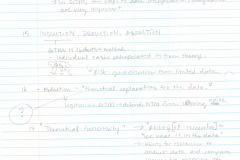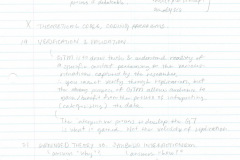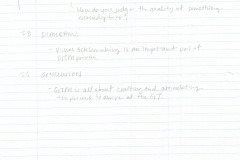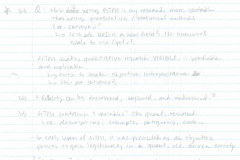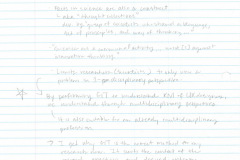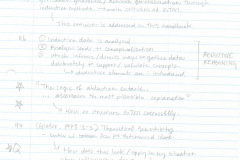
April 14, 2020
- “Research method makes epistemological claims”; research method describes how knowledge will be produced (32)
How is using GTM in my research more suitable than using quantitative methods? Is it because UXD is a new field? There are no numerical scales to use (yet)?
- GTM make qualitative research visible; therefore verifiable and replicable
- This becomes an effort to make objective interpretation?
- “Reality can be discovered, explored, and understood” (34)
- GTM contains variables such as descriptions, concepts, categories, code, etc. (35)
GTM vs. Conventional Science
- In early years of GTM, it was presented as an objective process to gain legitimacy in a society dominated by quantitative (scientific) research
- “[Goffman] testified that a single observer could construct incisive analyses when embedded in the research setting” (37)
- Peter Berger, Thomas Luckmann, Harold Garfinkel led to claim that “people constructed their realities through their ordinary actions”
- Garfinkel’s concept of “ethnomethodology” = collective construction; researchers engage with the data
- Kuhn’s challenge to conventional science (42)
- Facts in science are also a construct, aka “thought collectives”
- Facts are developed by “group of scientists who shared a language, set of principles, and way of thinking…”
- This limits researchers (scientists) to only view a problem in 1-disciplinary perspective
- Glaser’s stance on data (44); don’t be concerned by its quality, range, amount, access, accuracy; focus on the methods to analyze (abduct) to form the GT
By performing GTM to understand the KM of UX designers, I can understand through multidisciplinary perspectives.
(UX design is also a multidisciplinary profession)
Using GTM for my research suits the context of the research, question, and desired outcome.
My desired outcome:
- Discover and develop novel theory (about KM of UX designers)
- Not building off of an existing theory
- Gathering data without a pre-constructed framework (because UX is a relatively new professional field and is transforming at the pace of technological innovation)
Induction, deduction, abduction (45)
Ways of using GTM successfully:
- You cannot guarantee/achieve generalization through inductive methods (main criticism of GTM)
- Steps of abductive reasoning:
- Inductive data is analyzed
- Analysis leads to conceptualization
- Which informs / directs ways to deliberately gather data to support / validate the concepts
- Therefore, deductive elements are introduced
- The key to GTM is to rationalize and articulate the abduction process clearly
- Start the research process with few pre-determined ideas (47)
How does this apply in my situation when interviewing designers? What are examples of pre-determined ideas about the KM of UX designers I should leave behind?
How can I prepare myself to use GTM without it seeming naïve and a buzz word as a novice researcher?
- Quality of GTM is evident by level of detail that is included about “the research process, the roles, social locations, perspectives of the researcher, the production of data, and the dialectical relations between sensitizing concepts and induction” (50)
- This leads to “situate out GTs, see complexity, and to avoid the hegemonic reach of over generalization…”
- The key is to make the audience believe that you are not over-generalizing because of how you articulate the complex nature of the environment you analyzed
…researcher strives to represent the studied phenomena as faithfully as possible… representation of experience…
page 51

